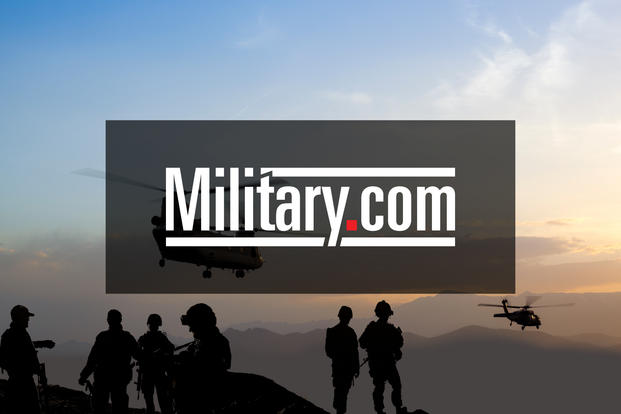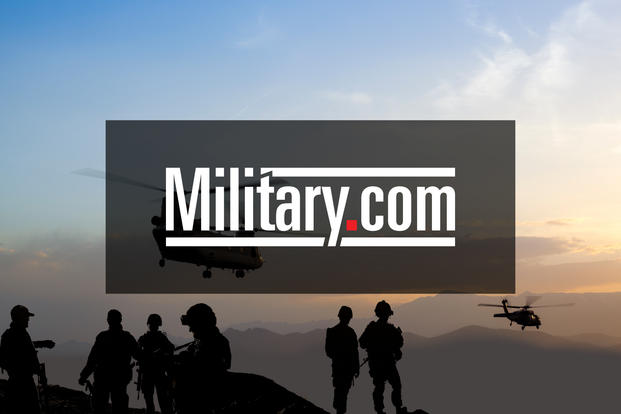The Navy SEAL team's MH-47 helicopter lurched violently after being struck by an enemy rocket-propelled grenade. Petty Officer 1st Class Neil Roberts was ejected from the aircraft onto the snow-covered, 10,000-foot peak below.
After crash landing, Senior Chief Britt Slabinski quickly organized a bold rescue mission and led the other five members of his SEAL team back into the sights of the enemy to save Roberts.
For his actions during that March 2002 mission, President Trump on Thursday presented Slabinski, now a retired master chief, with the nation's highest award for valor: the Medal of Honor.
The small room in the White House was packed with guests that included Slabinski's family, fellow SEAL teammates and former Medal of Honor recipients.
"Britt received information suggesting their comrade, Neil Roberts, the man thrown out of the helicopter, was probably still alive. The team faced a choice: to wait for reinforcements and pretty much safety, or to return immediately to the enemy stronghold in the hope of saving Neil's life," Trump said, recounting Slabinski's heroism.
"They would be outmanned, outgunned, and fighting uphill on a steep, icy mountain. ... But Britt and his team didn't even hesitate for a moment. They made their decision. For them, it was an easy one. They went back to that mountain."
Slabinski's team had originally begun a mission the day before to establish an observation post on top of Takur Ghar, a mountain in Afghanistan's Shah-i-Kot Valley, as part of Operation Anaconda.
Slabinski is credited with risking his life under intense enemy fire to save fellow SEALs who were wounded on the mission. It would cost the lives of seven U.S. service members, including Roberts, and become known as the Battle of Roberts Ridge.
Though Slabinski's team had seven men, 20 more Rangers and three airmen would take part in the two-day fight.
The attempted rescue was under enemy fire from the start, Trump said.
"When their helicopter reached the mountain peak, they jumped out into a furious onslaught of machine-gun fire like none of them had ever seen before," he said.
At one point in the fight, Slabinski and his comrade, Air Force Tech. Sgt. John Chapman, "charged uphill toward the enemy, where John was shot after clearing a bunker," Trump continued.
The enemy then unleashed a hail of machine-gun fire from a second hardened position only 20 meters away, according to the Medal of Honor citation.
"Senior Chief Slabinski repeatedly exposed himself to deadly fire to personally engage the second enemy bunker and orient his team's fires in the furious, close-quarters firefight," the citation states.
It was believed that Chapman died on the mountainside. Drone footage later revealed he lived at least another hour, according to reports.
"Two of his other teammates, Stephen 'Turbo' Toboz and Brett Morganti, both suffered very, very serious leg injuries," Trump said. "Britt helped them to safety and called in airstrikes as continuous fire drove them ever further down the face of the mountain."
In a treacherous descent, Britt and his men carried Toboz through the snow, the president said. They fashioned a "makeshift harness to hoist Turbo down a 13-foot cliff."
"When they could go no further, Britt tended to the wounded and coordinated their escape until his team was finally evacuated from enemy territory," Trump said.
He took a moment to honor the men who lost their lives on the mission. In addition to Roberts and Chapman, Trump read the names of Cpl. Matthew Commons, Spc. Marc Anderson, Sgt. Bradley Crose, Senior Airman Jason Cunningham, and Tech. Sgt. Philip Svitak.
The president then said Slabinski made it clear he is accepting the Medal of Honor for his entire team.
"Britt wants the country to know that for him, the recognition he is about to receive is an honor that falls on the whole team ... on every American warrior who fought the forces of terror on that snowy Afghan ridge," Trump said.
"We are free because warriors like you are willing to give their sweat, their blood and, if have to, their lives for our great nation," he said.
-- Matthew Cox can be reached at matthew.cox@military.com.
















